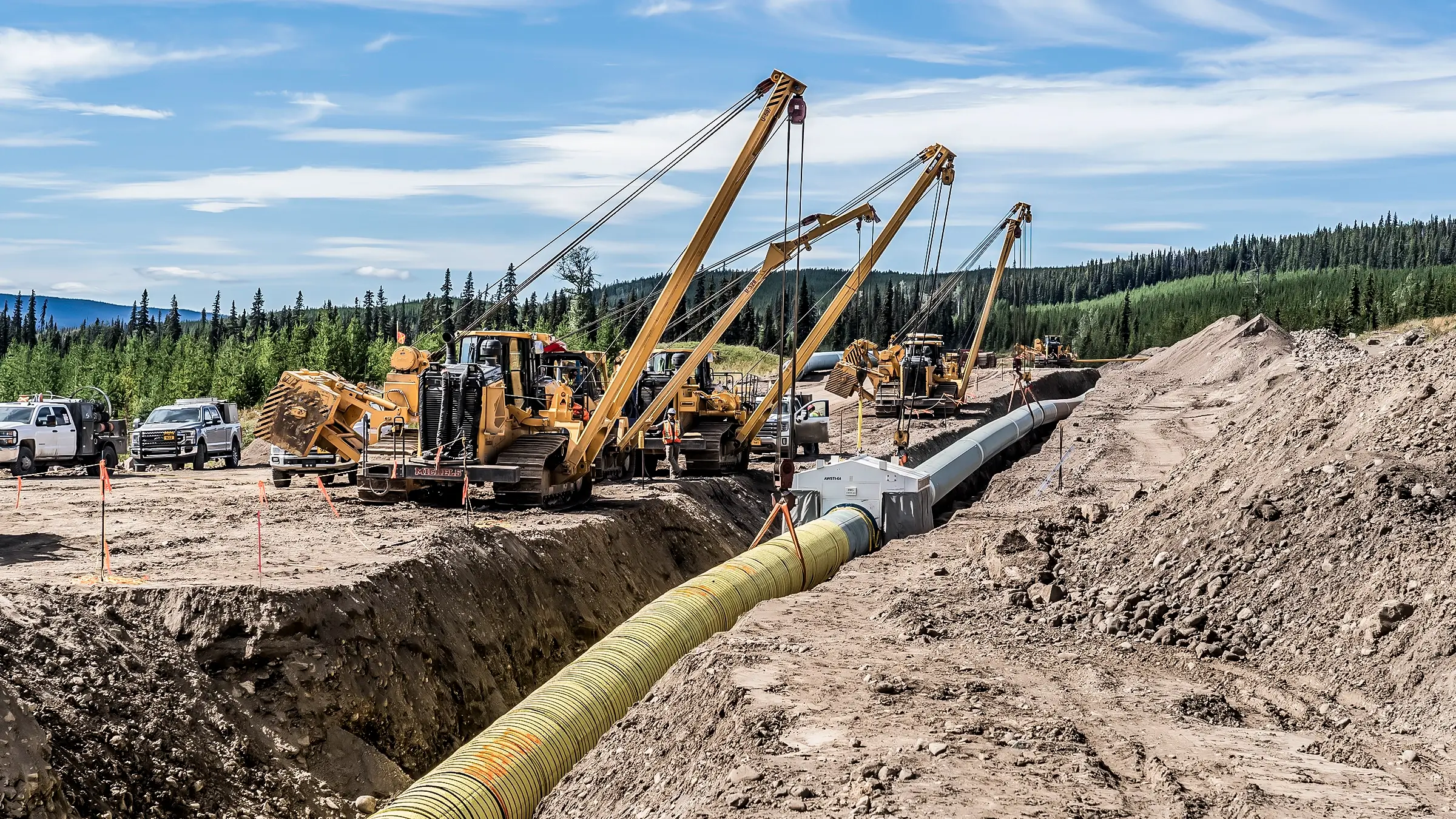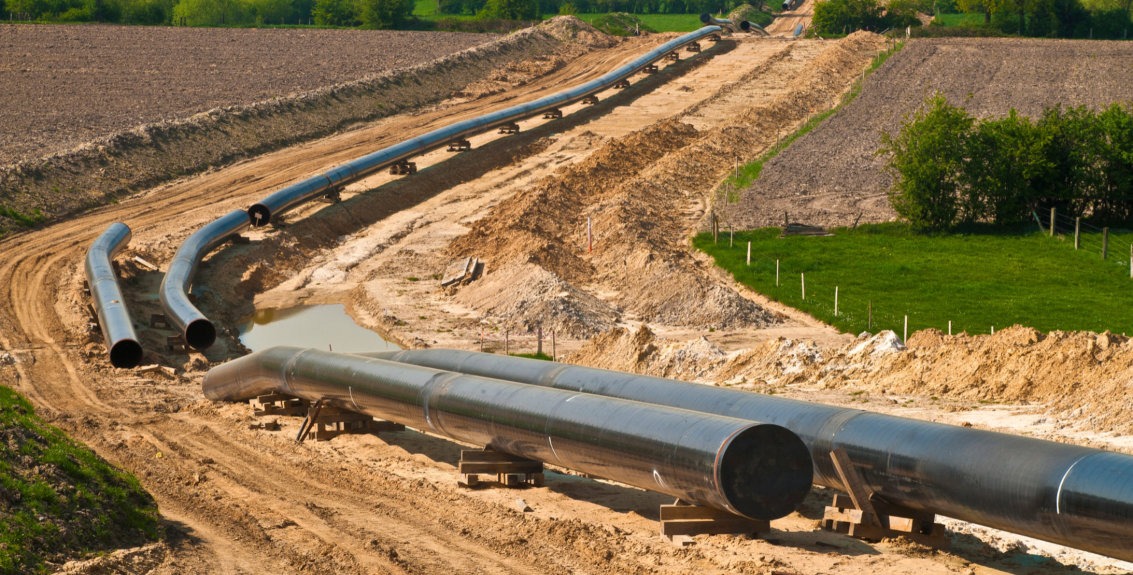What Affects Your System’s Lifespan? Insights From Creek Pipe HDPE installation
The Relevance of Pipeline Construction: Discovering the Solutions Used in the Market
Pipeline construction is a critical part of contemporary infrastructure. It facilitates the transportation of important sources like oil, gas, and water. The sector encompasses numerous services, consisting of planning, website preparation, and installment. Each phase needs precision and adherence to safety criteria. As neighborhoods depend on these systems for their incomes, recognizing the ins and outs of pipeline construction discloses its relevance and potential obstacles. What aspects affect the success of these projects?
Review of Pipeline Construction Solutions
Pipeline construction services incorporate a range of specific tasks developed to promote the installation of pipes for transferring different materials, including oil, gas, and water. These solutions generally consist of site preparation, excavation, installation of pipe sections, and backfilling. Knowledgeable labor and innovative equipment are basic for guaranteeing each phase is implemented with precision and safety.Safety methods are extremely important, as these projects commonly entail dealing with harmful products and in tough environments. Quality control steps establish that the pipes satisfy market requirements and policies. Furthermore, the services may involve trenchless technology, which minimizes surface area disruption.Environmental factors to consider play a substantial duty in pipe construction, calling for evaluations and mitigations to safeguard surrounding environments. Generally, pipe construction solutions are vital for establishing the infrastructure necessary for energy and water distribution, sustaining both economic growth and social demands.
Preparation and Layout in Pipeline Projects
Reliable planning and style are important parts of effective pipe jobs, making sure that all facets are diligently resolved prior to construction starts. This phase involves complete usefulness studies that evaluate the technical, financial, and environmental factors affecting the job. Engineers and developers work together to create detailed strategies that outline the pipe path, materials, and construction approaches, lining up with regulatory needs and market standards.Advanced software and modeling strategies are typically employed to replicate various circumstances, maximizing the design for effectiveness and safety. Ecological effect assessments are carried out to mitigate prospective injury to environments and areas, reflecting a dedication to sustainable methods. In addition, stakeholder involvement is necessary, cultivating communication and attending to issues from influenced celebrations. Inevitably, effective planning and style set the foundation for a pipe task, reducing risks and ensuring a structured construction process, inevitably adding to the overall success of the procedure.
Site Prep Work and Excavation
Complete site prep work and excavation are necessary action in the pipeline construction process. This stage includes a comprehensive evaluation of the land where the pipe will certainly be installed. Project groups perform surveys to determine dirt kinds, topography, and existing energy lines to assure a risk-free and reliable excavation. Appropriate website preparation minimizes ecological influence and promotes smoother construction operations.Excavation complies with, where hefty machinery is employed to remove dirt and rock, producing a trench that satisfies the specified depth and size for the pipeline. This procedure should comply with safety regulations and ecological guidelines to stop damage to surrounding ecosystems.Additionally, disintegration control measures are applied to support the website throughout and after excavation. Effective website prep work and excavation add significantly to the total success of pipeline jobs, laying a strong structure for the subsequent stages of construction.
Pipeline Installation Techniques
Pipeline installation techniques are crucial for the effective execution of facilities tasks. Two popular methods consist of trenchless technology, which reduces surface disturbance, and the open-cut excavation procedure, recognized for its straightforward technique. Each strategy provides distinctive advantages and factors to consider depending upon task requirements and ecological aspects.
Trenchless Modern Technology Approaches
While standard approaches of pipeline setup typically include considerable excavation, trenchless modern technology approaches use an extra effective and eco-friendly option. These cutting-edge strategies, such as horizontal directional boring and pipe bursting, decrease surface area disruption by enabling the setup of pipelines without considerable excavating. This not only lowers the environmental effect however likewise significantly minimizes labor and remediation prices. Trenchless methods assist in the setup of pipes in city locations where typical excavation would certainly be impractical or destructive to existing facilities. Furthermore, these techniques can fit various dirt types and conditions, making them functional remedies for pipe construction. Inevitably, trenchless modern technology stands for a substantial advancement in the pipeline industry, advertising sustainability and operational effectiveness.

Open-Cut Excavation Process
Open-cut excavation continues to be a fundamental method in pipeline installment, identified by the direct excavation of a trench to lay pipes. This approach involves getting rid of dirt and various other materials to create a trench of enough depth and size, enabling the positioning of pipelines at the required grade. Open-cut excavation is usually preferred for its cost-effectiveness and simplicity, specifically in locations with secure soil conditions. It can interrupt surface area tasks and needs cautious preparation to manage web traffic and ecological impacts. Security procedures must be implemented to safeguard workers exterior water service line coverage and close-by framework during the excavation process. In general, while open-cut excavation may not appropriate for all terrains, it stays an extensively used strategy in pipe construction.
Testing and Quality Control
Testing and top quality assurance are vital parts in pipeline construction, ensuring that setups meet well-known safety criteria and performance needs. Numerous assessment methods and techniques are employed to assess worldly top quality and adherence to governing compliance. This systematic approach helps recognize prospective concerns before they rise, protecting the integrity of the pipe system.

Inspection Techniques and Techniques
Examination techniques and approaches are vital components in guaranteeing the honesty and safety and security of pipeline construction. Different strategies, consisting of aesthetic evaluations, ultrasonic testing, and radiographic exams, are used to discover flaws and verify top quality. Visual inspections permit the recognition of surface abnormalities, while ultrasonic screening makes use of audio waves to evaluate wall thickness and locate imperfections inside. Radiographic examinations include X-rays or gamma rays to produce photos of the pipeline's framework, disclosing covert concerns. Furthermore, pressure screening is conducted to review the pipeline's honesty under operational problems. These techniques jointly add to a complete understanding of the pipeline's problem, enabling prompt maintenance decisions and guaranteeing conformity with industry requirements. Reliable evaluation is critical for stopping failings and promoting visit this website lasting operational security.
Safety Specifications Conformity
Guaranteeing conformity with safety requirements is extremely important in pipeline construction, as it straight impacts the project's general quality and dependability. Sticking to well established regulations and standards warranties that construction methods minimize risks linked with pipe installation and operation. Creek Pipe reviews. Rigorous testing methods, consisting of non-destructive screening and stress evaluations, are critical in verifying that pipelines can withstand the operational stresses they will certainly run into. Quality control measures are also important, as they establish a framework for consistent surveillance and analysis throughout the construction procedure. By focusing on security requirements compliance, companies not only safeguard workers and the environment yet additionally improve the stability of the pipeline, ultimately bring about lasting functional success and public count on in the infrastructure
Product Top Quality Examination
Material top quality analysis plays a substantial function in the overall honesty of pipeline construction. This process entails extensive screening and quality control measures to ensure that materials excavator prices fulfill industry criteria and specs. Various examinations, including tensile toughness, corrosion resistance, and weld honesty evaluations, are carried out to recognize any kind of prospective weaknesses. A thorough examination not only assures the performance of the pipe but additionally enhances safety and security and longevity over its life expectancy. Additionally, carrying out quality assurance procedures helps minimize threats connected with product failures, which can lead to expensive fixings and environmental dangers. By focusing on material quality examination, business can assure compliance with governing demands while fostering confidence amongst stakeholders in the reliability of their pipe systems.
Maintenance and Fixing Services
Repair and maintenance services play a vital role in the durability and effectiveness of pipe systems. These services include normal evaluations, troubleshooting, and corrective actions to address deterioration, leaks, and other issues that may occur gradually. Knowledgeable technicians utilize advanced technologies such as ultrasonic testing and smart pigging to keep track of pipe stability, guaranteeing that any type of potential problems are recognized early.Additionally, upkeep programs usually consist of arranged precautionary steps designed to enhance system integrity and minimize the probability of unexpected failings. Repair solutions may involve the substitute of broken sections, sealing leakages, or utilizing trenchless technology for minimal disturbance.
Environmental Conformity and Precaution
Pipeline systems not just call for continuous repair and maintenance to function successfully however also must follow strict environmental compliance and precaution. These laws are crucial for decreasing environmental impact and ensuring public safety and security. Business in the pipe construction industry apply complete environmental evaluations before task initiation, determining possible dangers to wild animals and ecosystems.Furthermore, adherence to safety methods safeguards employees and bordering communities. This consists of normal training on emergency action and spill prevention techniques.To preserve conformity, industries use keeping track of modern technologies to discover leakages and other abnormalities in real-time. Ecological administration strategies are frequently created to outline steps for resolving unexpected problems during construction.Ultimately, strict adherence to ecological conformity and safety steps not just meets lawful commitments yet also fosters sustainable methods within the sector, advertising an equilibrium in between facilities advancement and ecological stewardship.
Often Asked Concerns
What Occupation Opportunities Are Offered in Pipeline Construction?
Career opportunities in pipe construction include duties such as job supervisors, designers, welders, and safety assessors. These positions require diverse abilities, offering pathways for development in an essential field of infrastructure development and energy distribution.

Exactly How Do Pipeline Projects Impact Local Communities?
Pipeline tasks substantially influence neighborhood neighborhoods by influencing economic development, supplying task chances, and boosting infrastructure. They might likewise raise problems concerning ecological impacts, land usage, and potential disturbances to community cohesion and all-natural ecosystems.
What Innovation Is Used in Modern Pipeline Construction?
Modern pipeline construction utilizes advanced innovations such as GIS for mapping, drones for airborne surveys, and automated welding systems to boost efficiency, safety, and precision, inevitably assisting in the efficient transport of sources throughout various surfaces. Creek Pipe roustabout.
How Are Pipeline Construction Costs Approximated?
Pipeline construction prices are estimated through detailed analyses of materials, labor, devices, and regulatory requirements. Aspects like terrain, task size, and environmental factors to consider additionally greatly influence the total budget and economic preparation for construction.
What Are the Largest Difficulties in Pipeline Construction Projects?
The most significant obstacles in pipe construction projects consist of regulative compliance, ecological worries, logistical issues, safeguarding financing, and taking care of labor lacks. Each element can considerably influence timelines and budgets, making complex the total implementation of the project.